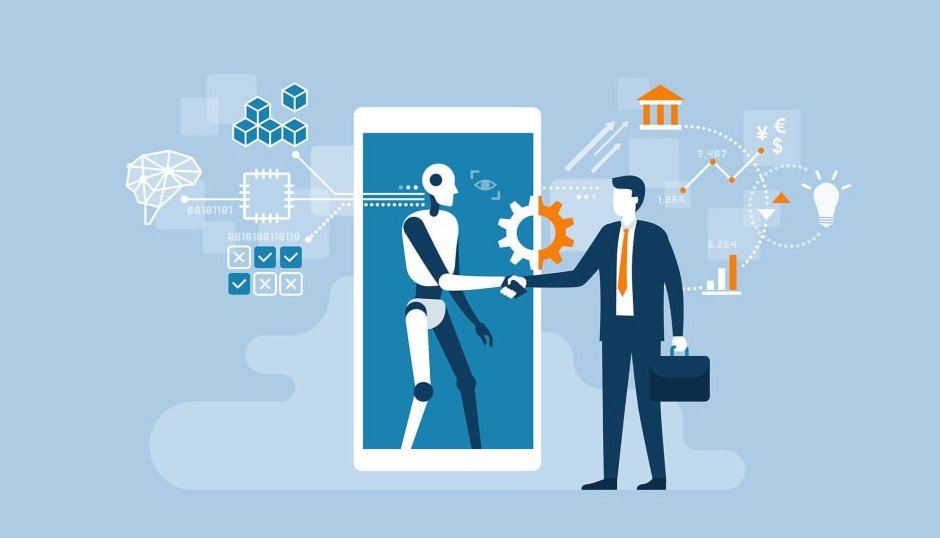Artificial intelligence (AI) is not a new concept for the tech giants. They have been using it to power their products and services for years, such as Amazon’s recommendation system, Google’s search engine, Apple’s Siri, Microsoft’s data management, and Meta’s advertising. But in recent months, they have announced a series of new initiatives and upgrades that show how they are taking AI to the next level.
Generative AI: the new frontier of machine intelligence
One of the most exciting developments in AI is the emergence of generative models, which can create new content or data based on existing examples. For instance, generative models can write text, compose music, draw images, or synthesize speech. These models are powered by deep neural networks, which learn from large amounts of data and can generate novel outputs that are realistic and coherent.
Generative models have many potential applications, such as content creation, data augmentation, personalization, and simulation. They can also enable new forms of human-machine interaction, such as conversational agents, virtual assistants, and creative collaborators.
Some of the most advanced generative models are developed by OpenAI, a research organization that is partly owned by Microsoft. OpenAI has created GPT-4, a massive language model that can generate text on almost any topic, given a prompt or a query. GPT-4 is the successor of GPT-3, which was released in 2020 and has been used by thousands of developers and companies to build various AI applications.
How four tech giants are leveraging generative AI
The tech giants are not only using generative models from OpenAI or other sources, but also developing their own versions and integrating them into their products and services. Here are some examples of how they are doing so:
- Amazon: The e-commerce giant is using generative models to enhance its cloud computing platform, Amazon Web Services (AWS). AWS offers various AI services to its customers, such as Amazon Lex for building chatbots, Amazon Polly for converting text to speech, and Amazon Rekognition for analyzing images and videos. AWS has also partnered with Hugging Face, a startup that specializes in natural language processing (NLP), to provide access to state-of-the-art NLP models on its platform.
- Microsoft: The software giant is using generative models to improve its productivity software, such as Microsoft Office, Teams, Outlook, and OneDrive. Microsoft has recently announced that it will add AI features to almost all its productivity software, such as summarizing meetings, generating captions for images, creating presentations from outlines, and suggesting edits for documents. Microsoft is also using GPT-4 to power its own chatbot, called ChatGPT.
- Alphabet: The parent company of Google is using generative models to enhance its search engine, its productivity tools, such as Gmail and Sheets, and its cloud computing platform, Google Cloud. Alphabet has recently launched its own AI chatbot, called Bard, which can generate text on various topics and styles. Bard is based on a generative model called Switch Transformer, which can switch between different modes of text generation depending on the input.
- Meta: The social media giant formerly known as Facebook is using generative models to boost its advertising business, its virtual reality platform, Oculus, and its metaverse vision. Meta has recently announced that it will use AI to “turbocharge” its social networks with new features and experiences. For example, Meta is using AI to create personalized ads that match the preferences and interests of users. Meta is also using AI to create realistic avatars and environments for its metaverse.
The implications and challenges of generative AI
The tech giants are betting big on generative AI as a way to differentiate themselves from their competitors and to create new value for their customers and users. Generative AI can potentially unlock new possibilities for innovation and creativity across various domains and industries.
However, generative AI also poses some challenges and risks that need to be addressed. For instance, generative models can produce misleading or harmful content that can affect the quality of information and the trustworthiness of sources. Generative models can also raise ethical and legal issues related to ownership, privacy, consent, and accountability.
Therefore, the tech giants need to ensure that they use generative AI responsibly and transparently. They need to establish clear guidelines and standards for developing and deploying generative models. They also need to collaborate with other stakeholders, such as researchers, regulators, customers, and users, to ensure that generative AI serves the public good.

